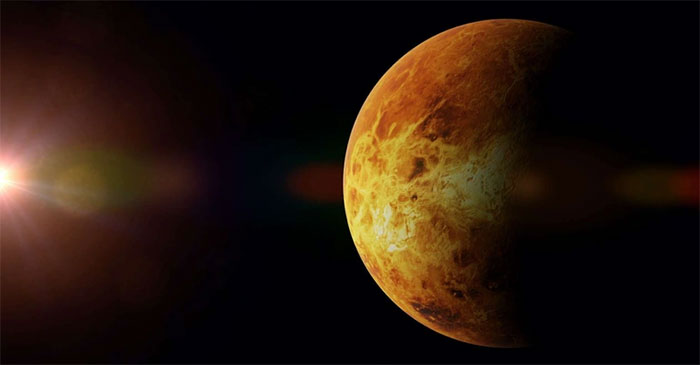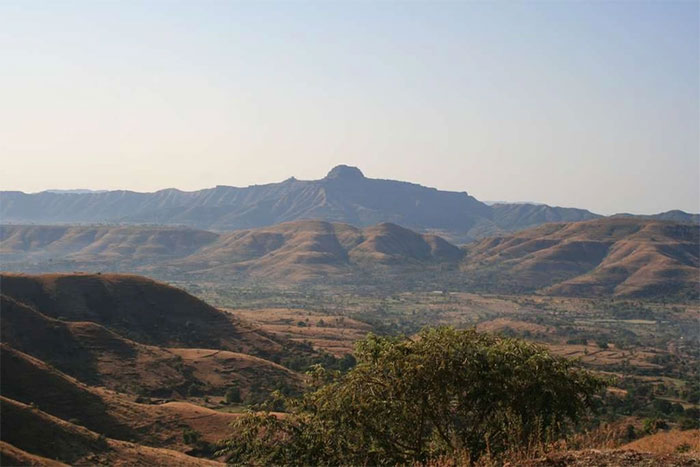Earth's twin planet has 'died' of suffocation?
Venus and Earth are considered to be twin planets, while Earth has life, Venus turns into a scorching hell.
The researchers believe that the current state of Venus is related to a combination of large volcanic eruptions.

Before becoming a "hell" as it is today, Venus was a planet that had the conditions to develop life.
Volcanic eruptions that occurred in the past marked the history of the Earth. Its power is greater than the collisions of asteroids, which caused a series of mass extinctions.
Overall, volcanic eruptions can lead to greenhouse effects and catastrophic temperature increases, one study found. While our planet avoided turning into a "burning hell," Venus wasn't so lucky.
The large magma furnaces found on Earth are evidence of intense volcanic eruptions, which led to the weathering of thick basalt plateaus and lasted for millions of years.
Scientists have hypothesized that these eruptions are a temporary cause for the dramatic changes in Earth's climate and habitat.
Therefore, the emission of large amounts of greenhouse gases will increase the temperature and change the chemical composition of the oceans. These changes could have largely contributed to the mass extinction experienced by terrestrial life.

The scene of lava piled up hundreds of meters high. The Deccan Traps in India are witnesses to a major period of magma eruptions in Earth's history
Scientists say that if a single large magma furnace is capable of altering the climate, its impact will not be enough to render the Earth unrecoverable. The proof is that our planet is always healing itself, providing a stable climate system favorable for life.
However, according to the study's authors, Earth has also experienced periods where large volcanic eruptions occurred simultaneously or at least in close proximity.
Venus: the vicious cycle of extreme global warming
For scientists, the simultaneous eruption of several large magma furnaces would have the potential to destroy a planet, by creating an irreversible vicious cycle.
This hypothesis could explain the current state of Venus. Before the hell it is today, Venus had favorable conditions for the development of life, especially the appearance of water on its surface.
However, the production of large amounts of greenhouse gases due to several simultaneous eruptions has increased the temperature of the planet leading to the evaporation of the oceans.
This leads to the addition of this water vapor to the atmosphere adding to the already volcanic greenhouse effect, pushing the planet into a cycle of warming hell, until liquid water disappears completely. . Experts call this a slow death by asphyxiation.

The surface of Venus was seen by the Venera 13 and Venera 14 probes.
According to the study's authors, Earth narrowly escaped this dire fate. The question is how many magma furnaces are needed to perturb the climate system and turn a rocky planet into hell.
- Discovering the twin planet of Jupiter
- Discovered that 9 'super-Earths' can support life
- The most Earth-like planet shows up
- Approaching the discovery of Earth's twin brothers
- Does 'twin' planets with Earth exist?
- Accident from suffocation - Sudden death
- Kangaroo is a rare twin in Australia
- Our earth is a unique planet in the universe?
- The twin twin stars are very different
- The world's tallest twin tower helps clean the air
- What is twin blood transfusion syndrome?
- Discovered the twin version of the solar system
 Van Allen's belt and evidence that the Apollo 11 mission to the Moon was myth
Van Allen's belt and evidence that the Apollo 11 mission to the Moon was myth The levels of civilization in the universe (Kardashev scale)
The levels of civilization in the universe (Kardashev scale) Today Mars, the sun and the Earth are aligned
Today Mars, the sun and the Earth are aligned The Amazon owner announced a secret plan to build a space base for thousands of people
The Amazon owner announced a secret plan to build a space base for thousands of people